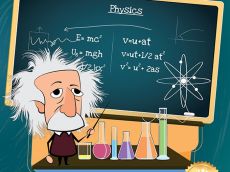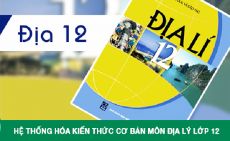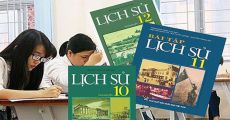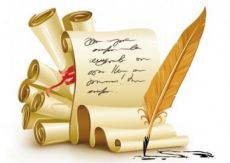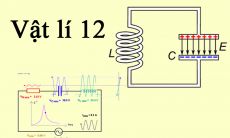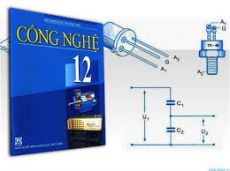Read the following passage and mark the letter A, B, C, or D to indicate the correct answer to each of the questions
Perhaps the greatest invention in history is writing. The flexibility of writing is perhaps the key to much of its power. But it may be that writing's very flexibility can be a curse as well as a blessing. A common concern with oral histories is the possibility that the truth will get distorted over time and that rumors will become truth. Written history evidences the same problem.
Throughout the centuries that writing has existed, forged documents have also existed. An ancient letter supposedly written by the Roman emperor Constantine in the 4h century A.D. shows that the duration of a document is not proof of its truth. For many centuries, the Catholic Church relied on this letter to enforce the legitimacy of its rule and its land. The letter from Constantine stated that he had become a Christian and donated a portion of his land to the Pope and to future Popes in the Catholic Church. Although it is true that Constantine converted to Christianity, the letter itself was discovered to be a forgery in the 15th century, and probably originated in the 8th century.
In addition to historical documents, great literature has also been forged. William Shakespeare, who died in 1616, is perhaps the most famous author in the world. Wouldn't someone benefit if a long-lost play was found? In 1796, William Henry Ireland announced that he had indeed found such a play entitled Vortigern. He sold it to a London theater producer, but as soon as he handed over the script, the producer immediately realized it was fake. He decided to produce it anyway as an April Fool's Day joke.
Some fake documents are easily debunked by highly literate people by comparing the suspicious document to writing that was definitely written by the author in question. If the writing style does not correspond to the known sample, it is not hard to declare the writing to be fake. However, it is not always so easy to use writing style, grammatical patterns, and word usage as a basis for identifying the real author of a of William Shakespeare.
In 1989, literature professor Don Foster identified a poem called "A Funeral Elegy" as the work of William Shakespeare. The work was added to collections of Shakespeare’s work, but in 2002 it was re- classified as the work of another writer - and Foster, now aware of his mistake, agreed.
(Adapted from Reading Explorer 5, Nancy Douglas et al., 2012)
Câu 35 : The best title for this passage is that ________.
Suy nghĩ và trả lời câu hỏi trước khi xem đáp án
Lời giải:
Báo saiKiến thức: Đọc hiểu
Giải thích:
Tiêu đề hay nhất cho đoạn văn này là ____________
A. Lịch sử truyền miệng so với Lịch sử viết
B. Các loại lịch sử bản ghi
C. Làm sao chúng ta biết nếu Shakespeare viết cái này?
D. Độ tin cậy và từ viết
Choose D.
Câu 36 : According to the passage, why would the flexibility of writing be a curse as well as a blessing?
Suy nghĩ và trả lời câu hỏi trước khi xem đáp án
Lời giải:
Báo saiKiến thức: Đọc hiểu
Giải thích:
Theo đoạn văn, tại sao sự linh hoạt của chữ viết là một lời nguyền cũng như một phước lành?
A. vì quyền lực có thể bị lạm dụng
B. vì công cụ tốt có thể khó tìm
C. bởi vì nó không thể ngăn chặn sự giả mạo
D. vì sự thật có thể gây ra vấn đề
Thông tin: But it may be that writing's very flexibility can be a curse as well as a blessing. A common concern with oral histories is the possibility that the truth will get distorted over time and that rumors will become truth. Written history evidences the same problem.
Tạm dịch: Nhưng có lẽ sự linh hoạt của chữ viết có thể là một lời nguyền cũng như một phước lành. Mối quan tâm chung của các lịch sử truyền miệng là khả năng sự thật sẽ bị bóp méo theo thời gian và tin đồn sẽ trở thành sự thật. Lịch sử bằng chữ viết minh chứng cùng một vấn đề.
Choose C.
Câu 37 : What happened as a result of the forged letter from Constantino?
Suy nghĩ và trả lời câu hỏi trước khi xem đáp án
Lời giải:
Báo saiKiến thức: Đọc hiểu
Giải thích:
Điều gì đã xảy ra do bức thư giả mạo từ Constantino?
A. Giáo hội cai trị vùng đất không thuộc về mình trong 1100 năm
B. Constantine đã tặng nhầm một phần đất của mình
C. Kẻ giả mạo có thể đã cố tình xuyên tạc sự thật
D. Constantine cải sang đạo Thiên chúa.
Thông tin: For many centuries, the Catholic Church relied on this letter to enforce the legitimacy of its rule and its land.
Tạm dịch: Trong nhiều thế kỷ, Giáo hội Công giáo đã dựa vào bức thư này để thực thi tính hợp pháp của quyền cai trị và vùng đất của mình.
Choose C.
Câu 38 : Which of the following statements would the author probably agree with?
Suy nghĩ và trả lời câu hỏi trước khi xem đáp án
Lời giải:
Báo saiKiến thức: Đọc hiểu
Giải thích:
Tác giả có thể đồng ý với nhận định nào sau đây?
A. Phong cách viết không phải lúc nào cũng xác định được sự giả mạo
B. Lịch sử truyền miệng đáng tin cậy hơn lịch sử viết
C. Lịch sử đầy rẫy các tài liệu giả mạo, vì vậy nó không đáng tin cậy
D. Phân tích các mẫu ngữ pháp và cách dùng từ đáng tin cậy hơn.
Thông tin: However, it is not always so easy to use writing style, grammatical patterns, and word usage as a basis for identifying the real author of a written text.
Tạm dịch: Tuy nhiên, không phải lúc nào cũng dễ dàng sử dụng cách viết, các mẫu ngữ pháp và cách dùng từ làm cơ sở để xác định tác giả thực sự của một văn bản.
Choose A.
Câu 39 : The underlined word "debunked” in the passage is closest in meaning to ___________
Suy nghĩ và trả lời câu hỏi trước khi xem đáp án
Lời giải:
Báo saiKiến thức: Đọc hiểu
Giải thích:
Từ được gạch chân “debunked” trong đoạn văn gần nghĩa nhất với _______
Debunked: bị bóc mẽ, lật tẩy
A. destroyed: bị phá hủy
B. laughed at hunked: bị cười nhạo
C. proved false: được chứng minh là sai
D. produced: được sản xuất
=> Debunked = proved false
Choose C.
Câu 40 : The underlined word "it" in the passage refers to __________
Suy nghĩ và trả lời câu hỏi trước khi xem đáp án
Lời giải:
Báo saiKiến thức: Đọc hiểu
Giải thích:
Từ được gạch chân “it” trong đoạn văn đề cập đến _______
A. một văn bản viết
B. một bài thơ
C. phong cách viết
D. tác phẩm của Shakespeare
Thông tin: In 1989, literature professor Don Foster identified a poem called “A Funeral Elegy” as the work of William Shakespeare. The work was added to collections of Shakespeare's work, but in 2002 it was re- classified as the work of another writer - and Foster, now aware of his mistake, agreed.
Tạm dịch: Năm 1989, giáo sư văn học Don Foster đã nhận định bài thơ “A Funeral Elegy” là tác phẩm của William Shakespeare. Tác phẩm đã được thêm vào bộ sưu tập các tác phẩm của Shakespeare, nhưng vào năm
2002, nó được xếp lại là tác phẩm của một nhà văn khác - và Foster, hiện đã nhận thức được sai lầm của mình, đã đồng ý.
Choose B.
Câu 41 : Based on the passage, it could be suggested that Don Foster's error was __________
Suy nghĩ và trả lời câu hỏi trước khi xem đáp án
Lời giải:
Báo saiKiến thức: Đọc hiểu
Giải thích:
Dựa trên đoạn văn, có thể cho rằng lỗi của Don Foster là __________
A. mù quáng trước định kiến của mình
B. cố tình hiểu sai sự thật
C. cố tình xuyên tạc sự thật
D. hiểu nhầm bài thơ
Choose A.
Đề thi thử THPT QG năm 2022 môn Tiếng Anh
Sở GD&ĐT Bắc Ninh Lần 3

